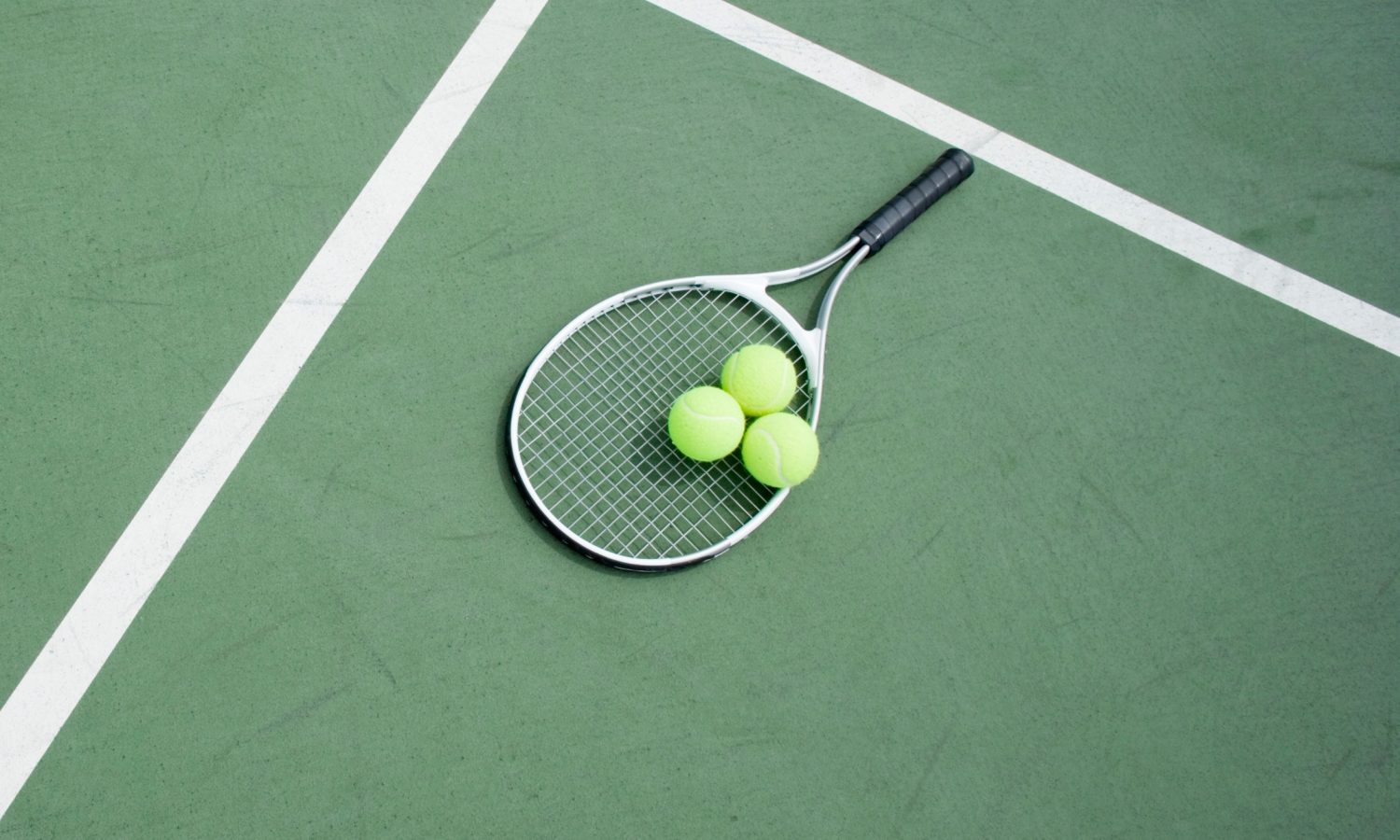
Tennis, unique name yard tennis, game in which two rival players (singles) or sets of players (duplicates) utilize tightly hung rackets to hit a wad of determined size, weight, and bob over a net on a rectangular court. When an opponent fails to correctly return the ball within the specified dimensions of the court, points are awarded to that player or team. Coordinated tennis is played by rules endorsed by the Global Tennis Alliance (ITF), the world administering body of the game.
Tennis initially was known as yard tennis, and officially still is in England, since it was played on grass courts by Victorian men of honor and women. It is presently played on various surfaces. The game can be traced back to a handball game called jeu de paume (literally, “game of the palm”) that was played in France between the 12th and 13th centuries. From this game came a complicated indoor racket-and-ball game: genuine tennis Tennis, originally known as lawn tennis, is a game in which two opposing players (singles) or pairs of players (doubles) use rackets that are tautly strung to hit a ball of a specified size, weight, and bounce over a net on a rectangular court. This ancient game is still played to a limited degree and is typically referred to as real tennis in Britain, court tennis in the United States, and royal tennis in Australia. Focuses are granted to a player or group at whatever point the rival neglects to return the ball inside the recommended components of the court accurately. Coordinated tennis is played by rules endorsed by the Global Tennis Alliance (ITF), the world overseeing body of the game.
Because Victorian gentlemen and ladies played tennis on grass courts, the sport was originally known as lawn tennis, and it is still officially known as such in Britain. Nowadays, it is played on a wide range of surfaces. The game can be traced back to a handball game called jeu de paume (literally, “game of the palm”) that was played in France between the 12th and 13th centuries. From this game came a complicated indoor racket-and-ball game: genuine tennis This old game is as yet played somewhat and is generally called genuine tennis in England, court tennis in the US, and regal tennis in Australia.
The cutting edge round of tennis is played by millions in clubs and on open courts. Its time of most fast development as both a member and a passive activity started in the last part of the 1960s, when the significant titles were opened to experts as well as novices, and went on during the 1970s, when transmissions of the growing proficient competition circuits and the ascent of a few striking players and contentions widened the allure of the game. Various significant developments in design and hardware powered and took care of the blast. An entirely new category of leisure clothing emerged as a result of the addition of color and style to tennis attire, which had previously been limited to white. Previously white, tennis balls now come in a variety of colors, with yellow being the most popular. Previously made primarily of laminated wood, racket frames suddenly became available in a wide range of sizes, shapes, and materials. The introduction of metal frames in 1967 and the oversized head in 1976 were the most significant milestones.
While tennis can be enjoyed by players of any skill level, top competition is a demanding test of shot making and endurance with a wide range of stylistic and strategic options. From its starting points as a nursery party game for women in whalebone bodices and treated underskirts and men in lengthy white woolen clothes, it has developed into an actual chess match in which players assault and protect, taking advantage of points and specialized shortcomings with strokes of generally different speed and twist. Competitions offer huge number of dollars in prize cash every year.
History and beginnings There has been a lot of debate about when modern tennis was invented, but Major Walter Clopton Wingfield introduced the sport in 1873, which was officially recognized in 1973. Although historians have concluded that similar games were played earlier and that the first tennis club was established by the Englishman Harry Gem and several associates in Leamington in 1872, he published the first book of rules that year and obtained a patent for his game in 1874. Wingfield’s court was of the hourglass shape and may have created from badminton. The hourglass shape, specified by Wingfield in his booklet “Sphairistiké, or Yard Tennis,” may have been embraced for patent reasons since it recognized the court from common rectangular courts. The real tennis governing body at the time was the Marylebone Cricket Club (MCC), which had recently updated its rules. After J.M. Heathcote, a recognized genuine tennis player, fostered a superior tennis chunk of elastic covered with white wool, the MCC in 1875 laid out a new, normalized set of rules for tennis.
In the mean time, the game had spread to the US during the 1870s. It is believed that Mary Outerbridge of New York brought her brother, a director of the Staten Island Cricket and Baseball Club, a set of rackets and balls. However, research has shown that William Appleton of Nahant, Massachusetts, may have claimed the principal yard tennis set and that his companions James Dwight and Fred R. Singes advocated the game.
A significant achievement throughout the entire existence of tennis was the choice of the All Britain Croquet Club to save one of its yards at Wimbledon for tennis, which before long demonstrated so well known that the club changed its name to the All Britain Croquet and Grass Social Club. The club decided to hold a tennis championship in 1877, and a three-member championship subcommittee was formed. It settled on a rectangular court that was 27 feet (8.2 meters) wide and 78 feet (23.8 meters) long. They adjusted the genuine tennis technique for scoring — 15, 30, 40, game — and permitted the server one issue (i.e., two opportunities to convey a legitimate help on each point). These significant choices remain part of the advanced principles. 22 sections were gotten, and the primary victor of the Wimbledon Titles was Spencer Blood. The Scottish Championships were held in 1878, and the Irish Championships were held in 1879.
There were a few modifications in a portion of different principles (e.g., overseeing the level of the net) until 1880, when the All Britain Club and the MCC distributed overhauled decides that surmised intently those still being used. At the time, the All England Club ruled, and the British Lawn Tennis Association (LTA) wasn’t founded until 1888. At the Staten Island Cricket and Baseball Club, the first United States championship was held in 1880. The victor was a Brit, O.E. Woodhouse. The U.S. National Lawn Tennis Association was founded in 1881, later renamed the U.S. Lawn Tennis Association, and became the U.S. Tennis Association (USTA) in 1975 due to the game’s widespread popularity in the United States and frequent questions about its rules. Under its protection, the main authority U.S. public title, played under English standards, was held in 1881 at the Newport Gambling club, Newport, Rhode Island. Richard Sears, the winner, won the U.S. championship seven times in a row.
Tennis had taken firm root in Australia by 1880, and the primary Australian Titles were played in 1905. In New Zealand, the first national championships were held in 1886. The Lawn Tennis Association of Australasia, which later became Australia, was established in 1904.
The principal French Titles were held at the Stade Français in 1891, yet it was an interclub competition that didn’t turn out to be genuinely global until 1925; the French Organization of Yard Tennis was laid out in 1920. Other public titles were introduced in Canada (1890), South Africa (1891), Spain (1910), Denmark (1921), Egypt (1925), Italy (1930), and Sweden (1936). Women’s national championships began in the United States in 1887, and a women’s championship was introduced at Wimbledon in 1884.
Outstanding players William and Ernest Renshaw, identical twins, dominated tennis in the 1880s. Seven times, William defeated his brother in the final of the Wimbledon singles championship. Ernest won once, and he and his partner won the doubles championship seven times, the first time it was played at Oxford in 1879.
Public interest began to wane in the 1890s. In 1894 and 1895, the Wimbledon Championships showed a loss in revenue; To get the All England Club back on its feet, the committee went back to croquet. Two additional brothers brought tennis and Wimbledon back to prominence: Laurie and Reginald Doherty From 1897 to 1900, Reginald was the Wimbledon singles champion. In addition to winning from 1902 to 1906, Laurie also won the U.S. championship in 1903 and an Olympic gold medal in 1900.
Frequently Asked Questions: What is tennis history?
The game can be traced back to a handball game called jeu de paume (literally, “game of the palm”) that was played in France between the 12th and 13th centuries. From this game came a complicated indoor racket-and-ball game: genuine tennis.
Who came up with tennis?
Prior’s (1914–1969) discovery of a method to formalize tense-logic establishes him as the founder of contemporary tense-logic. Despite this, he believed that J. N. Findlay, his first teacher of philosophy and logic, was, in a way, the father of modern tense-logic.
What is tennis called?
The racket sport generally named grass tennis, concocted in Birmingham, Britain, presently usually referred to just as tennis, is the immediate relative of what is currently meant genuine tennis or regal tennis, which keeps on being played today as a different game with additional perplexing standards.
For what reason is tennis a popular game?
Tennis is a sport for life. Tennis is a sport that doesn’t involve any physical contact and can be played for life. It is a worldwide game. Tennis is played all through the world, in each nation and is currently quite possibly of the most generally played sport on the planet. It is also one of the most profitable.
Who played tennis?
Louis X is the first tennis player in history to be named because of contemporary accounts of his death. One more of the early lovers of the game was The best Charles V of France, who had a court set up at the Louver Castle.



